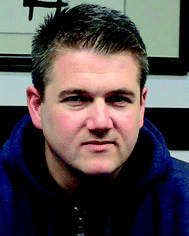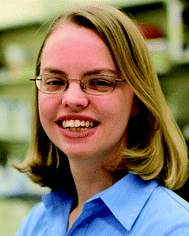Introduction to electrochemistry for health applications
Craig E.
Banks
 a,
Tony
Killard
a,
Tony
Killard
 b and
B. Jill
Venton
b and
B. Jill
Venton
 c
c
aManchester Metropolitan University, Manchester, M1 5GD, UK
bDepartment of Applied Sciences, University of the West of England, Bristol, BS16 1QY, UK
cDepartment of Chemistry, University of Virginia, PO Box 400319, Charlottesville, VA 22904, USA
One major health application that is important for diagnostics is biomarker detection. A classic biomarker test is the prostate cancer test which tests for prostate specific antigen (PSA). Wei Cao’s group has developed a new amplification strategy to increase the signal for PSA detection (DOI: 10.1039/C8AY01533C). The Singh group has developed ZnSnO3 perovskite nanomaterials to test for cardiac biomarkers (DOI: 10.1039/C8AY02617C). The Pingarrón group reviews detection of autoantibodies in cancer and immune diseases, which can be a sign of immune system activation against disease (DOI: 10.1039/C8AY02742K). Any sensor used in a biological sample is subject to fouling, so the Luo group reviews new strategies for anti-fouling coatings for electrodes (DOI: 10.1039/C8AY02674B). The continuing importance of enzyme measurement in diagnostics is highlighted by Xu and co-authors (DOI: 10.1039/C8AY02793E). Their review gives a current perspective on alkaline phosphatase as both a marker of disease as well as a label in electrochemical sensors.
Another major health application that electrochemistry enables is the quick detection of drugs. The samples could be biological fluids, such as blood or urine, to detect drug pharmacokinetics, or the samples could be pills or suspensions, to ensure drug quality and dose. The Banks group developed disposable screen-printed electrodes with iron oxide nanocubes for meclizine, an antihistamine (DOI: 10.1039/C8AY02405G), and also developed an HPLC-amperometry method for detecting fentanyl and its derivatives (DOI: 10.1039/C9AY00009G), which are opioids that are often abused. Diagnostics for haemostasis and coagulation increase in interest in electrochemical sensors, and the Zhang group have developed a polyethylenimine-based sensor for the measurement of heparin in plasma, which remains a very important anti-coagulant drug (DOI: 10.1039/C8AY02722F).
Electrochemistry has been used traditionally for many applications in neurochemistry. The Venton group reviews how carbon electrodes are designed for these applications (DOI: 10.1039/C8AY02472C), while the Hashemi group reviews how these electrodes are used for in vivo monitoring of neurotransmitters (DOI: 10.1039/C9AY00055K). While dopamine is traditionally detected, much research is now concentrating on other neurotransmitters and the Khoobi (DOI: 10.1039/C8AY02701C) and Sartori groups (DOI: 10.1039/C8AY02805B) here develop new electrochemical strategies for epinephrine detection. The Zestos group studied metabolites such as DOPAC with new polymer-coated sensors (DOI: 10.1039/C8AY02737D).
Bacterial detection is also another health application of electrochemistry. The Brosseau group is studying electrochemical surface-enhanced Raman spectroscopy (EC-SERS) for identifying different bacteria (DOI: 10.1039/C8AY02613K). Wenchao Dou’s group developed an electrochemical immunosensor to detect different E. coli (DOI: 10.1039/C8AY02594K).
Some of the articles focus more on sensor development for different applications. The Morrin group developed an epidermal tattoo electrode platform for skin physiology monitoring (DOI: 10.1039/C8AY02678E). The Lunte group optimized a microchip electrophoresis method with electrochemical detection for the determination of nitrite in macrophage cells, developing better ME-EC techniques that could be generally useful for many biomolecules (DOI: 10.1039/C8AY02014K). Wei Zhang’s group developed a molybdenum disulfide nanosheet for the detection of a breast cancer gene, demonstrating that electrochemistry is good for gene detection as well (DOI: 10.1039/C8AY02425A).
Overall, electrochemistry is important for health applications and Analytical Methods authors are developing cutting edge methods for understanding and diagnosing health problems. This field will continue to grow as better electrodes are developed and more biological targets are identified. Thus, Analytical Methods welcomes continued contributions in this area as we seek to demonstrate early stage applications to important health problems.
Craig E. Banks
Tony Killard
B. Jill Venton
| This journal is © The Royal Society of Chemistry 2019 |



